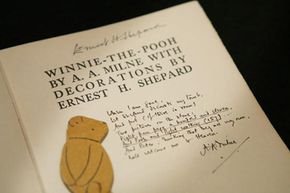Everyone has an "Antiques Roadshow" fantasy. Maybe a great-aunt passes away and you're asked to sort through her dusty, overstuffed attic. After digging through boxes and boxes of moth-ridden clothes and yellowed newspaper clippings, you come upon a tightly sealed chest.
Prying the chest open with a crowbar, you find a row of pristine books with gilded edges and crisp, unopened bindings. You gently pull them from the chest: first editions of "The Catcher in the Rye," "To Kill a Mockingbird" and the complete "Lord of the Rings" trilogy! All signed by the authors! You've stumbled upon a rare book bonanza worth tens of thousands of dollars -- and that's why they call it a fantasy.
Advertisement
But what if you really do find a collection of old, possibly valuable books? How do you know if they're worth anything? Short of waiting for "Antiques Roadshow" to come to town, you can start by understanding the qualities and attributes of truly rare and valuable books.
Just because a book is old doesn't mean that it's automatically valuable. The most basic criterion is scarcity. A book is considered rare -- and therefore more valuable -- when demand exceeds supply [source: RBMS]. Even if a book is hundreds of years old, it's worthless if there are thousands of copies in circulation (and if nobody particularly wants them).
Beyond scarcity, there are several other factors that influence the value of an old book: its physical condition, its importance as a literary work and its "story" -- where it came from, if it was an inscribed gift from the author or the property of a famous person [source: ABAA]. First editions generally carry the most value. A first edition is any copy of a book that was printed from the first setting of type [source: ABAA].
Among serious bibliophiles, several categories of books are considered the rarest and most sought-after texts:
- A complete first-edition Gutenberg Bible, the first book ever printed in 1456 (estimated worth: $25 to $35 million)
- Anything printed before 1501
- English books printed before 1641
- American books printed before 1801
- Banned or suppressed works of which few copies survive
If you think you own a rare and valuable book, start by examining its condition. In the next section, we'll explain how to grade a book from "as new" to "poor" and everything in between.
Advertisement


